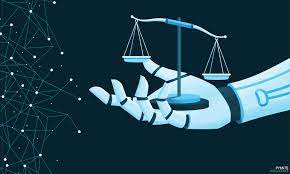Shatakhsi Aggrawal, a 2nd-Year Student of Law at Vivekananda Institute of Professional Studies has written this Article “Three Judges Case”
BACKGROUND
The Constitution of India gives no indication of the procedure for the appointment of the Chief Justice. Therefore a convention developed over the years that the senior-most judge would become the Chief Justice of India whenever there is a vacancy. However, this convention was not followed on the retirement of the 13th Chief Justice i.e. Sikri J on 24th April 1973 as A.N. Ray J was appointed the Chief Justice of India stepping into the shoes of Shelat J, Grover J, and Hedge J as these judges were senior to A.N. Ray J and as a result the three superseded judges resigned in protest.
This was held again on the retirement of Ray Chief Justice as the senior most judge Khanna J superseded and Beg J was appointed the Chief Justice and Khanna J resigned in protest. However, after the retirement of Beg Chief Justice, the senior judge Chandrachud J was appointed the Chief Justice, and the rule of seniority was followed again. The Supreme Court also held that the senior-most judge shall always be appointed as the Chief Justice unless he is fit to be appointed. This interpretation of the court raised doubts about the appointment of judges and the Chief Justice. In addition, it also resulted in a clash between the Executive and the Judiciary.[1]
All this resulted in the filing of a petition in 1981 which is famously called the First Judges Case-1981 and further petitions in 1993 and 1998 famously known as Second Judges Case-1993 and Third Judges Case-1998. These three judgments of the Supreme Court are collectively known as the Three Judges Cases. Throughout these three cases, the court evolved the principle of judicial independence.
FIRST JUDGES CASE (1981)
S.P. Gupta v. Union of India [2] is known as the First Judges Case. In this case, a lot of writ petitions were filed by various lawyers and practitioners in different high courts challenging an order of the government on the non-appointment of 2 judges and their transfer. It also questioned the constitutional validity of the procedure followed for the appointment of judges in higher courts.
One of the several petitions was filed by S.P. Gupta, who served as an attorney in the Allahabad High Court at that time and the validity of these petitions was questioned by an advocate from the Ministry of Law and Justice.
The Supreme Court in this case laid down three major points-
- The Supreme Court held that the word ‘consultation’ in Article 124 does not mean concurrence. Hence, the President was not bound to make a decision based on the consultation of the Supreme Court.
- The Supreme Court decided that a High Court Judge can be transferred to any other high court of a state even against his will.[3]
- Transfer and appointment of judges are in the interest of the public domain and the decision of the government not to disclose it is not justified as disclosure would not be made only if such disclosure would affect the public interest.
SECOND JUDGES CASE (1993)
Supreme Court Advocates on Record Association (SCARA) v.Union of India [4] is known as the Second Judges Case. The majority verdict, in this case, was delivered by Justice J.S. Verma and this case resulted in the birth of the collegium system. Another petition was filed by Supreme Court Advocates on Record Association and the Supreme Court in this case overruled S.P. Gupta v. Union of India and laid down the following points-
- The Case has established the Chief Justice of India’s primacy in appointments and transfers. It ruled that “consultation” means concurrence, binding the President to the Chief Justice’s consultations.
- The court held that the Chief Justice of India, in consultation with 2 senior judges, should make recommendations. The executive should normally give effect to such recommendations.
THIRD JUDGES CASE (1998)
In re: Special Reference 1 of 1998[5] is known as the Third Judges Case. This case reiterated the supremacy of the judiciary over the executive in the course of judicial appointment. In this case, the Supreme Court laid down the following points-
- The Supreme Court held that the expression ‘consultation’ with the Chief Justice of India in Articles 124, 217, and 222 of the Constitution of India requires consultation with the majority of judges in the formation of the opinion of the Chief Justice of India and the individual and personal opinion of the Chief Justice of India do not constitute valid consultation
- Consultation would include a collegium of 4 senior-most judges of the Supreme Court.[6]
- The Supreme Court also laid down strict guidelines for the appointment of Judges of the Supreme Court and high courts. These guidelines are currently known as the Collegium System.
NATIONAL JUDICIAL APPOINTMENT COMMISSION ACT, 2014
While the collegium system invented by the court was appreciated for ensuring the exclusion of political interference in the appointment of judges, it was also criticized for amending the Constitution establishing a monopoly of judges in the appointment of the Supreme Court and High Court judges.
Consequently, a recommendation was made to amend the Constitution and replace the collegium with a judicial commission representing judges, executives, and other experts. The Constitution was amended, along with the support act, on the last day of 2014.[7] The Constitution (99th Amendment) created the National Judicial Appointment Commission Act, 2014, found in Article 124A. The Act’s functions and Parliament’s power to make laws are outlined in Articles 124B and 124C.
Several provisions regarding the appointment of Supreme Court and High Court judges, as well as transfers of High Court judges, were changed by this amendment. The changes were significant and impacted the functioning of the judiciary in India. Moreover, the act provides the President to act on the recommendations of the National Judicial Appointment Commission Act.
FOURTH JUDGES CASE, 2015 (the current system of appointment of judges)
Supreme Court Advocates-on-Record-Association and another V. Union of India[8] is known as the Fourth Judges Case. In this case, the National Judicial Appointment Commission Act of 2014 was challenged in the Supreme Court even before coming into force. The court, by a 4:1 majority, invalidated and declared the amendment unconstitutional and void after it came into force. The court preserved judicial independence, a basic feature of the Constitution, by invalidating the act. The main points laid down in this case were-
- The Supreme Court held that Article 124A does not provide adequate representation to the judicial component of the National Judicial Appointment Commission which is insufficient to preserve the primacy of the judiciary and hence violative of the independence of the judiciary which forms the essential structure of the Constitution.
- The Supreme Court held the 99th Amendment and therefore the National Judicial Appointment Commission Act as ‘unconstitutional and void’.
- The court held that appointments to the Supreme Court and High Court, as well as the appointment of Chief Justice of India and transfers of judges, should follow the pre-99th Amendment system. In other words, the court invalidated the National Judicial Appointment Commission and restored the earlier system.
CONCLUSION
The independence of the judiciary from the executive and the legislature as well as the independence of every judge within the judiciary is considered necessary for a free society and a Constitutional democracy. It ensures rule of law and realization of human rights and also the prosperity and stability of society. Therefore, the Constitution provides for the independence not only of the Supreme Court but also of the High courts and the subordinate courts. The Supreme Court in its various judgments has also held more than once that independence of the judiciary is the basic feature of the Indian Constitution. in addition, any attempt to curtail it directly or indirectly even by an amendment of the Constitution is invalid.[9]
The Three Judges cases in 1981, 1993, and 1998 emphasized judicial independence. The judgment of 2015 let the existing position continue undisturbed subject to any suggestions for improving the working of the collegium of the judges and the position laid down in the Third Judges Case continues.
[1] V.N. Shukla, Constitution of India, 509
[2] AIR 1982 SC 149
[3] BYJU’S, https://byjus.com/free-ias-prep/collegium-system/
[4] (1993) 4 SCC 441
[5] AIR 1999 SC 1
[6] BYJU’S, https://byjus.com/free-ias-prep/collegium-system/
[7] V.N. Shukla, Constitution of India, 510
[8] (2016) 5 SCC 1
[9] See, S.P. Gupta v. Union of India, 1981 Supp SCC 87: AIR 1982 SC 149
![]()




Leave feedback about this